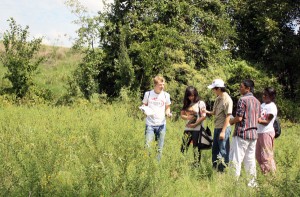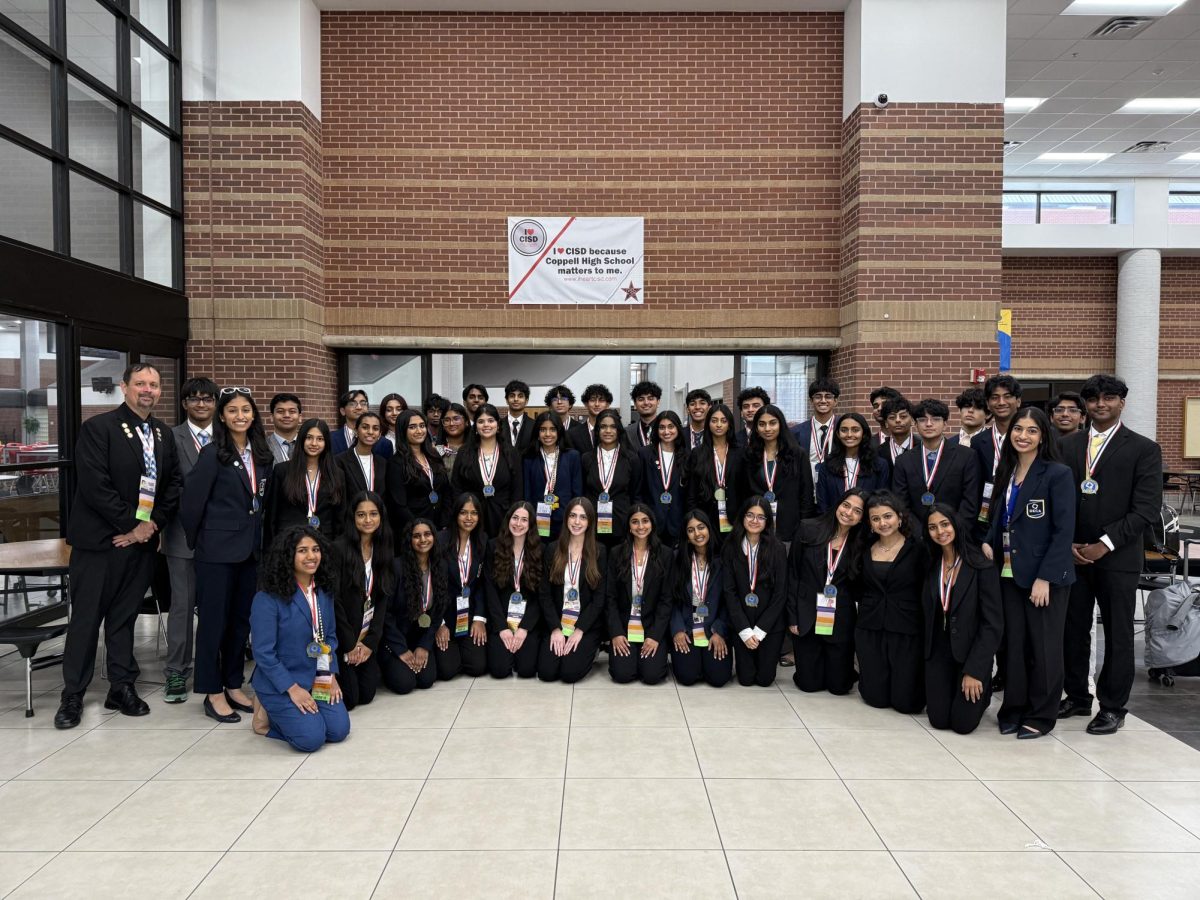by Divya Kumar
News Editor
The deteriorating state of our environment is well-known, as issues such as pollution, global warming and greenhouse gases continue to pile up. As part of a project to sustain a vital part of the ecosystem – the black land prairie – the AP and IB Environmental Science students designed and coordinated a project to facilitate conservation. After proposing their ideas, the school was rewarded $10,000 on Friday, October 8th, by the Healthy Habitants Grant to go about enacting such methods.
The idea for the project began when Environmental Science teacher Holly Anderson received a letter from the Coppell Nature Park asking for help. Based on their needs, students then formulated a plan to restore a section of the nature park back to a black land prairie.
The one IB and three AP classes were divided into groups of four to research and develop a method to go about formulating such restoration. In order to provide more insight into the issue at hand, all 115 students visited the Coppell Nature Park on a field trip to see the black land prairie they would be restoring up close and gather data to use as support for the foundations of a plan.
“It was really good to go and actually see what we were trying to restore,” AP Environmental Science senior Meera Patel said. “It gave us great perspective of what the land was actually like, which all the web-based research we had up till that point couldn’t. Based off of the things we saw, we were better able to gather what exactly we needed to do to restore the area.”

After visiting the park, the students collected all their previous data and recent experiences to generate their plan as to how to promote conservation. Each group was required to fill out their own grant, which they then presented to several members of the community who were involved with the Nature Park. These community members then provided individual groups feedback with what to fix with their proposals, and after they were changed, final grants were submitted by each group.
“We took a compilation of all the grants they wrote, extricated out the best ideas and then reformatted it back into just one grant,” Anderson said. “Of course, there was some of the application that I had to fill out, but for the most part, it’s all student voice, as was required; they filled out the grant by themselves.”
After receiving confirmation of the fact that they had been rewarded with the grant and celebrating briefly with an in-class party, Environmental Science classes immediately went about thinking of ways to implement their plan based off of the generous sum of money they had received. In order to go about fully understanding the grant, four students – seniors Zack Korman, Michael Rieger, Akanksha Joglekar and Ashley Attanucci – travelled with Anderson to Austin on October 23rd to officially accept the award and go through a training session of how to use the money.
“I felt like, after getting the grant, there was still so much I could do to help restore the prairie and make it a great part of the community of Coppell,” Rieger said. “The service learning training in Austin sounded like a great way for me to acquire more of the skills I would need to do just that. Beyond just this, I figured it would be cool to see what exactly happened at meetings like this.”
While in Austin, the students attended a meeting containing information about how to effectively use the grant. The focus was on how they could increase their student voices in projects in order to appeal more to the community to emphasize the fact that it was a student-based restoration project. In addition to this, the students were told that they needed to increase publicity about their restoration project in order to get more members of CHS and the community involved.
“The conference was really helpful because it set us off on the right track with our restoration,” Rieger said. “It also gave us more tools to utilize to help get more of Coppell High School involved with the restoration.”
The students talked with a biologist from Texas Parks and Wildlife, who told them that the best way to restore the plot of land they were dealing with back into a prairie would be to first mow it down and rid it of all the current vegetation. Then the students were to throw out seed balls, which contain a certain type of soil that will help any plants that grow out of them adapt to the area and establish themselves in different kinds of soil.
In addition to this, the students talked to a group from the Fort Worth County Day School who also attended the meeting. The students had restored a prairie in Fort Worth and planned to Skype with the CHS Environmental Science classes to help them with their projects. Coppell students will likely be taking a field trip to the Fort Worth County Day School to see their restored area of land and gain further insight into how they can undertake the process in the Coppell Nature Park.
The students have been working on the project for roughly four weeks, and it will be off-and-on for the duration of the year, simply because of all the core concepts that tie back into it regarding ecology. Beyond just class, there will be much student participation in the restoration of the park as they will be volunteering there alongside professional help. In order to have the plan implemented by June, as the grant requires, help from both exterior community members will also be needed.
Beyond just having the ability to help restore a plot of land within the community, the implications of this project run far deeper for the students.
“It’s a real-world opportunity,” Anderson said. “In addition to learning the curriculum, students are able to understand how to work with their community and collaborate to create a consensus. I feel like they know understand the need for working with and giving back to the place they live in, and I hope that this inspires them to want to give back in the future, because anything they do – no matter how small it may be – has the ability to make a difference.”








